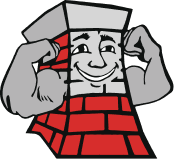Burning Woods in Your Fireplace
 Getting the most out of your fireplace and the wood you burn in it is easy, if you follow these six tips on efficient and safe wood-burning practices.
Getting the most out of your fireplace and the wood you burn in it is easy, if you follow these six tips on efficient and safe wood-burning practices.
-
Seasoned woods
Seasoned wood has had time to fully dry and won’t produce nearly as much smoke as damp or unseasoned wood. Give your firewood plenty of time to dry out, and you’ll enjoy fires that are easier to start and that thoroughly burn all your logs.
To aid in the drying process, if you cut your own wood, make sure to store it in a place not susceptible to rain. Cover the stack with a tarp, but leave the sides open so air can get in. Finally, use pallets or a similar structure to keep the wood several inches off the ground, which may be wet or damp.
-
Hardwood vs. softwood
All wood feels hard to the touch, but some wood types are harder than others. Hardwoods like hickory and maple are very dense and produce longer and hotter burns than cedar, pine and other softwoods, which are lighter and more porous. Consider this when deciding how long you want your fire to stay active.
-
The best way to start your fire
Start by stacking logs in a way that allows for air to get in between them. Logs packed too tightly together is a major cause of fires that burn sluggishly. On top of the stack, place a good amount of smaller wood scraps, or kindling. On top of the kindling, add some crumpled-up newspaper to serve as tinder. Burn your fire from the top down for the best results.
-
What not to burn in your fireplace
 Clean, unfinished wood and small amounts of newspaper are the only items that should burn in your fireplace. Never use the following:
Clean, unfinished wood and small amounts of newspaper are the only items that should burn in your fireplace. Never use the following:
Household trash
Cardboard boxes/pressed wood/particle board
Accelerants such as lighter fluid and gasoline
Styrofoam containers
Plastic material
Christmas trees
Clothing or any other fabric
-
proper drafting
The space between your logs provides needed oxygen to your fire, but a good draft circulation is necessary to really get a fire going. Achieve a proper draft by:
Making sure your fireplace damper is fully open
Keeping your chimney flue free of obstructions such as built-up creosote and outside debris
Cracking a window or two if your home is particularly air-tight
-
Schedule yearly chimney cleaning
A clean chimney assists in producing a great fire, but it also keeps you and your family safe by reducing the chance of a chimney fire. qualified chimney sweeps use specialized tools and equipment to safely remove creosote from chimneys. Many people don’t realize it, but the majority of chimney fires in the U.S. each year are caused by chimney creosote that has ignited, not simply because the inside of the chimney has overheated.
By following these tips for burning wood in your fireplace, you’ll be in for many years of warmth and enjoyment – and safety.
When it’s time for professional chimney cleaning, chimney inspection or chimney repair work, the experts at Northeastern Chimney of West Hartford, CT, are ready to help. Give us a call at (860) 233-5770.


